Parallel Traces
Traces of Jewish Life in Europe.
Part 3/5: Sighet (Maramures), Romania. Daniel Grünfeld.
Funded by EU Art & Culture Grant 2019.
Group exhibition: Girona, Wroclaw, Belgrade, Sighet, Tiblisi.
Published in LF Magazine No.8, 2020 (Barcelona).
Introduction
Towards the end of my six weeks long stay in Sighet, I decided to revisit the sites that intrigued me the most. By way of a silent contemplation, I then stood in each of these places, simply paying attention and reflecting on all that I have learned about this region’s Jewish past. My camera was mounted on a tripod next to me and with a cable release in my hand I waited until I felt it was time.
The resulting photographs are a combination of fairly long exposures, between 1/25th and 1 full second, as well as multiple exposures of the same image. Everything is done in camera. There is hardly any post processing.
The pictures are in black and white because I wanted to maintain a certain timelessness. I wanted them to connect to the images that I reviewed in historical archives. I wanted to add something to that material, or rather to enter into some kind of a dialogue with it. The other part of this dialogue, as you will read in the captions, is with Elie Wiesel – arguably Sigeht’s most prominent Jew. His voice and his memories permeate each of these pictures.
13 May 2019
Image 1 (no.4153): Jewish Cemetery, Breb
9 images of 1 second exposures over a 9 minute period
Location: Breb, Maramures, 47°44’47.3″N 23°54’35.6″E

I returned to this little cemetery in Breb, because it embodied the very essence of what I kept thinking of as the Jewish landscape of Maramures. While searching for the cemetery in the meadows near the eastern edge of the village, I met a young shepherdess tending her sheep here. She would come here regularly, she told me and this image of her and her herd in front of the cemetery in the midst of this spectacular landscape stayed with me. I urge you to come and find this cemetery.
Standing there, I was reminded that the landscape is not just an array of related geological features. While there is indeed a landscape out there of meandering rivers, grass covered hills, magnificent sunsets and autumn trees, there is also a landscape of ideas, of culture, of business, of politics and of history. That is to say, the landscape always brings together organisms, activities and things.
Observing the trajectories of people and animals while taking this picture, I was reminded how every landscape is ultimately collapsing into movement and temporality. My former professor Tim Ingold once wrote that “human beings do not, in their movement, inscribe their life histories upon the surface of nature as do writers upon the page;” – that is to say that the landscape is not just a passive backdrop to our lives, but rather, that our “histories are woven, along with the life-cycles of plants and animals, into the texture of the surface itself.”
I like this idea of weaving. I like to know that looking at this landscape and at this cemetery, is looking at the very lives of the people that inhabited it. I like that we all belong to the “same current of activity” (1).
Image 2 (no.4195): Pillars of the Great Synagogue
1 image of 1 second exposure.
Location: Gheorghe Doja 75
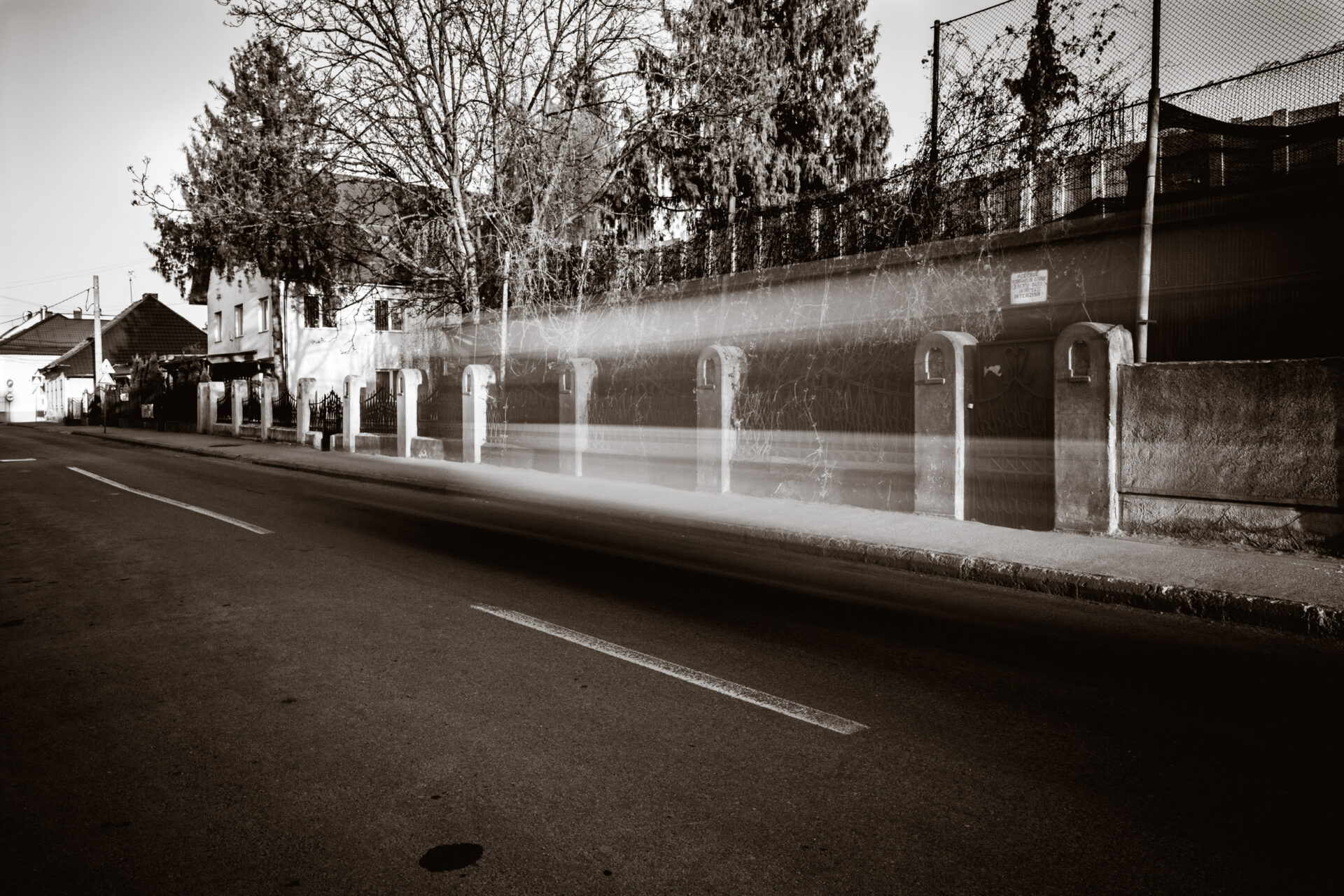
Where the Great Orthodox Synagogue of Sighet once stood, only these twelve inconspicuous pillars and the fence remain today. Built in 1790, it must have been an impressive temple with several neighbouring structures: a school, the home of the rebbe and a large mikveh behind it. After the deportations, it was used as storage space for a short while and then burnt down entirely in 1945. There is a picture of it in ruins in the Yad Vashem archives, item ID 41084.
While there is a monument here, hidden from sight from this perspective, these pillars were for me the actual anchors of memory as the still visible traces connecting us to the city’s Jewish past. Standing there like austere guards from the twelve tribes of Israel, they could speak volumes about how the community thrived and prospered here. “You might think Sighet was one enormous synagogue,”(2) wrote Elie Wiesel somewhere in his memoirs.
If you visit this spot in mid April around 18:30 you’d notice that the light of the setting sun falls in a very particular angle, illuminating only this side of the street and especially the pillars. It is quite remarkable really.
While standing there alongside my camera, waiting for something to happen, I imagined a young man in a long distant past coming to the synagogue and noticing the exact same light. I imagined him standing there, observing, while others were coming and going to and from their studies and prayers. I imagined the chanting of the Torah coming from inside and various debates carried out in Yiddish in the yard; somewhere children were laughing.
Through all of this, for more than a century, these pillars stood here in silence. They stood in silence while the synagogue was burning. Though in silence they stood, they did not move. Like stubborn witnesses they stand here now to tell us this story. They have no temple to guard anymore, but they are guarding our memory.
Image 3 (no.4210): The first Rebbe
3 Images of 1/25th second exposures over 15 minutes
Location: Vasile Alecsandri No. 2
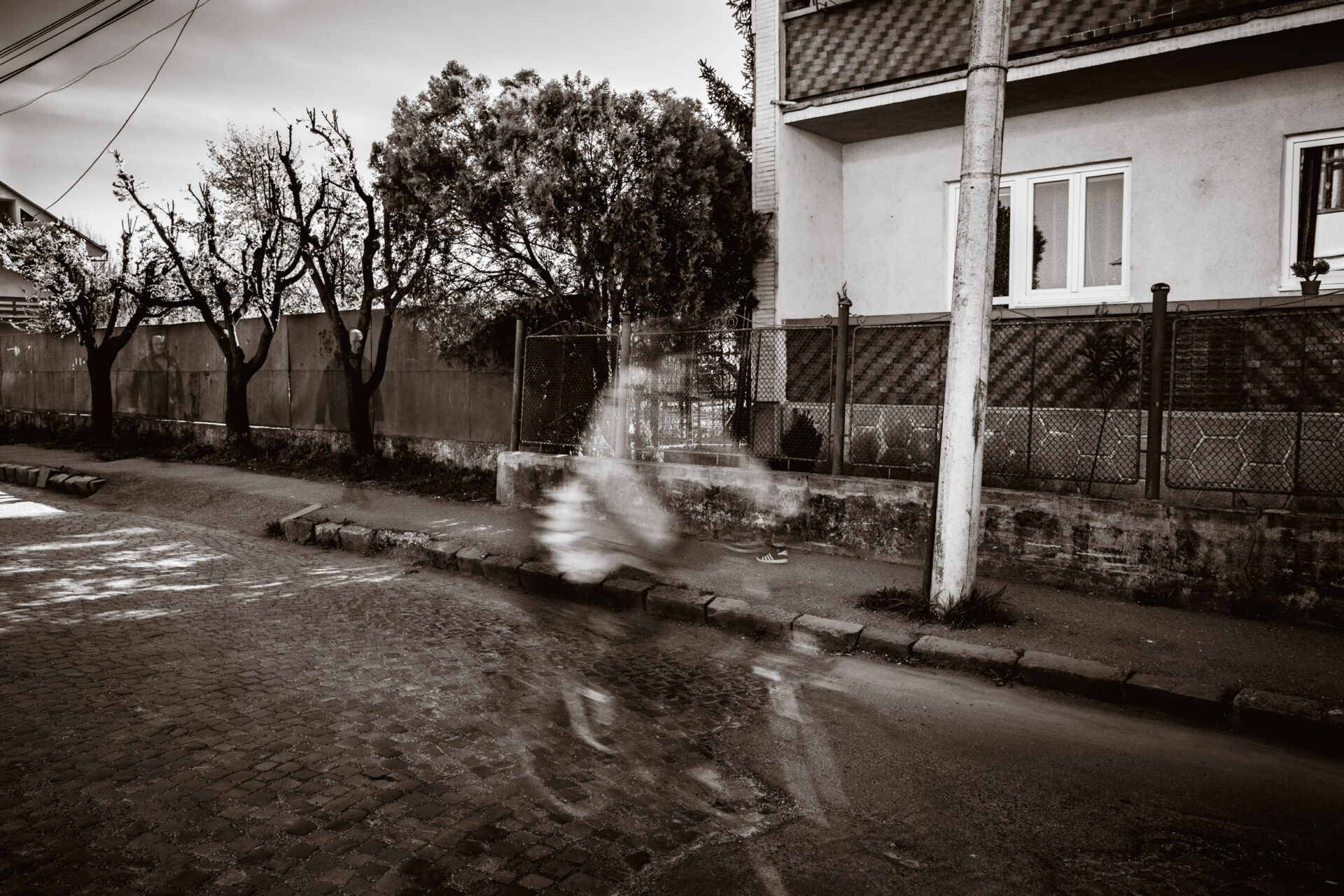
There is a school behind me and the entrance to the bustling city market is right around the corner. It is a vivid spot in the middle of town. In front of me, in the yard of this brutalist apartment block, built during Romania’s communist period, stands a single forlorn Jewish grave – a remnant from another era entirely. You might just barely see it over the fence if you go and visit this spot.
The first Rebbe of Sighet, Zvi Ben Mose Abraham, remains buried here and his grave is perhaps the earliest trace of Jewish life that exists here. He died in 1771.
Legend has it that when all the graves were to be relocated to the current Jewish cemetery, lightning struck, killing one of the oxen that were used for this venture, thus preventing the Rebbe’s moving.
This unmovable grave felt to me like an anchor; like the centre of gravity around which the entire Jewish history of Sighet revolved.
Standing here, I thought about the rise and fall of the Jews of Sighet between two pogroms that took place in the course of less than three centuries: many Jews arrived in Sighet as refugees from the persecutions under Khmelnytsky during the 17th century in neighbouring Ukraine. They then prospered here and grew to comprise 40% of the total population, only to then be caged in the ghettos and transported to their deaths in the camps of Birkenau-Auschwitz.
The horrific stories I read and heard from first person accounts, together with the few photographs of the abandoned streets of Sighet after the deportation that I found in archives, started to haunt me while standing here. For half an hour, I observed people passing by the Rebbe’s grave, going about their everyday lives. I kept remembering Elie Wiesel’s descriptions of the crowded ghetto and the dreadful living conditions that the Jews of Sighet had to endure. These cobble-stones bear witness.
Elie Wiesel’s natal house is in fact just a few hundred metres away. In his descriptions of life in the ghetto, Wiesel mentioned that at first the Jews of Sighet actually considered the ghetto to be a good thing, where they could live among brothers in a small Jewish republic, away from the hating gazes of their former neighbours. You can imagine how unbelieve the stories of the atrocities of the death camps must have sounded in this “island of Maramures”, hidden away in the northern Carpathians.
“The ghetto”, Wiesel writes, “was ruled by neither German nor Jew; it was ruled by delusion.” (3)
Image 4 (no.4220): The Jewish Court
6 images of 1/13th second exposures over 10 minutes
Location: Piata Libertatii 10
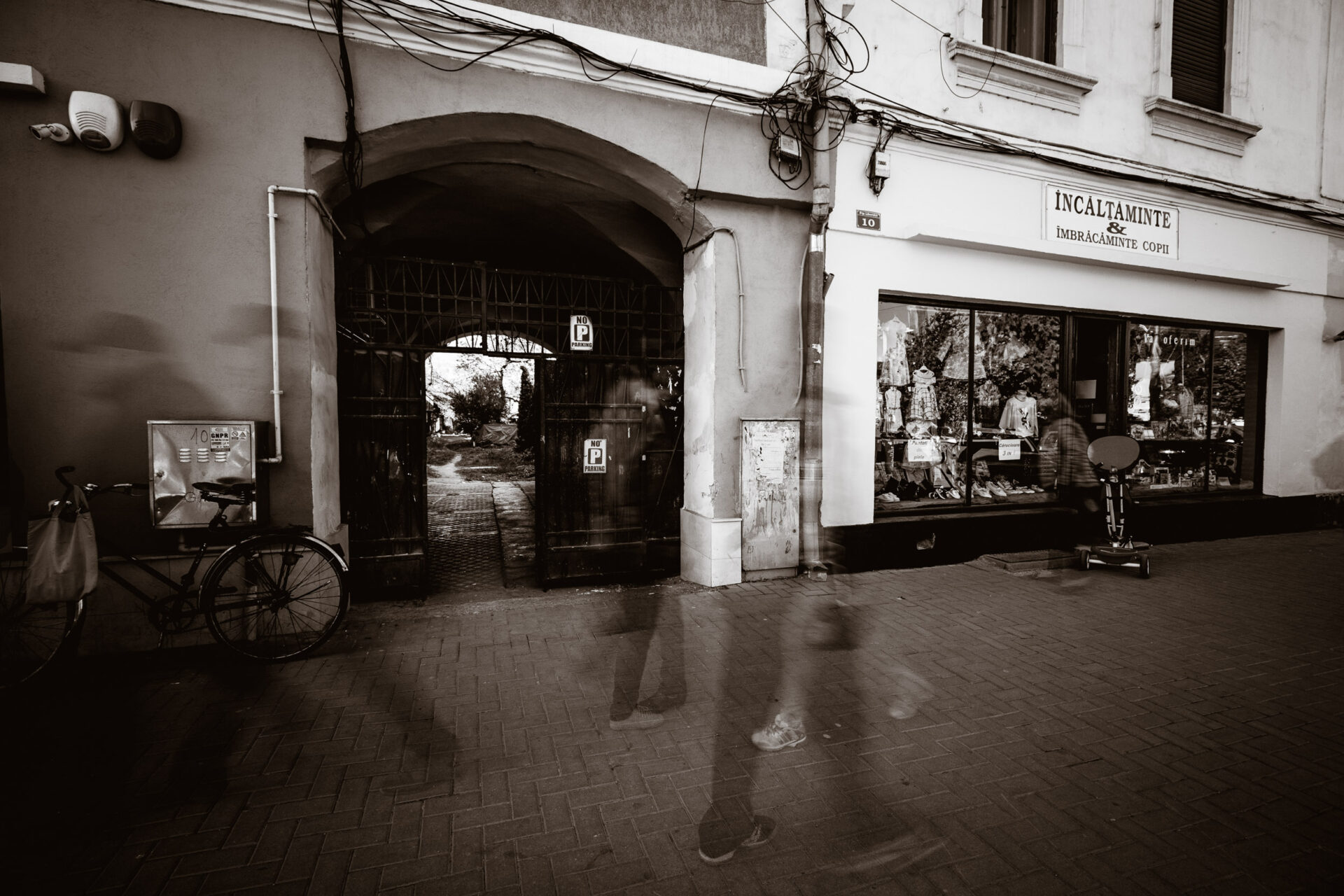
We are right in the centre of Sighet, so to speak on High Street. Behind this gate in the entrance to the inner courtyard you’ll find the floor decorated with circular ornaments containing each a Magen David: the only traces that remind us of what was once a wealthy Jewish residence. Originally, as I was told by one of the current inhabitants, the entire building belonged to a single family by the name Kiselnik.
Behind such gates, along this entire street, are what remains of the majestic courtyards of Sighet. Buildings once rich and luxuriant, some forming a gass, an alleyway that connected the centre with the Jewish neighbourhood behind it, are now all, if not in ruins like the famous Kahana Court right next to this one, mostly run down private apartments or social houses.
“Sziget”, wrote Elie Wiesel in a message to the editors of the Sziget Book, “a flourishing and vibrant Jewish community filled with song and dream, destined to be carried away by a tempest of fire to an abyss of death under a dark and silent sky; (…) I remember the park, the Corso, the noisy Jewish Street and the small Gypsy Alley, the crowded courtyards, the modern houses of the wealthy and the miserable huts of the poor. All had their own shapes, their own destinies, their own stories, some sombre and impenetrable, other luminous and strangely joyous. Rabbis and merchants, tailors and cobblers, beggars and princes in disguise: all are still hunting my memory.” (4)
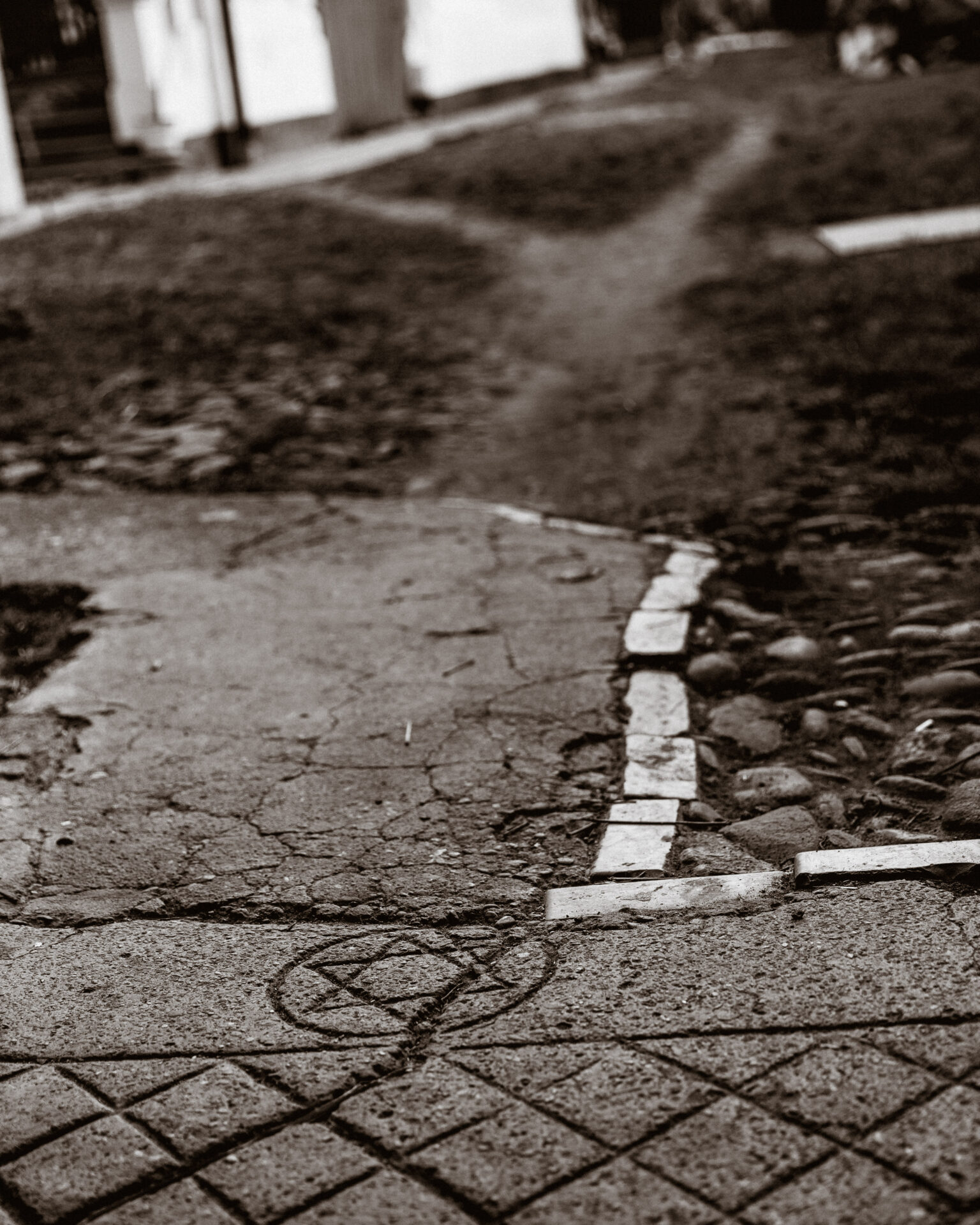
Image 5 (no.4232): The Jewish House
6 images of 1/20th second exposures over 30 minutes
Location: Gheorghe Șincai 11
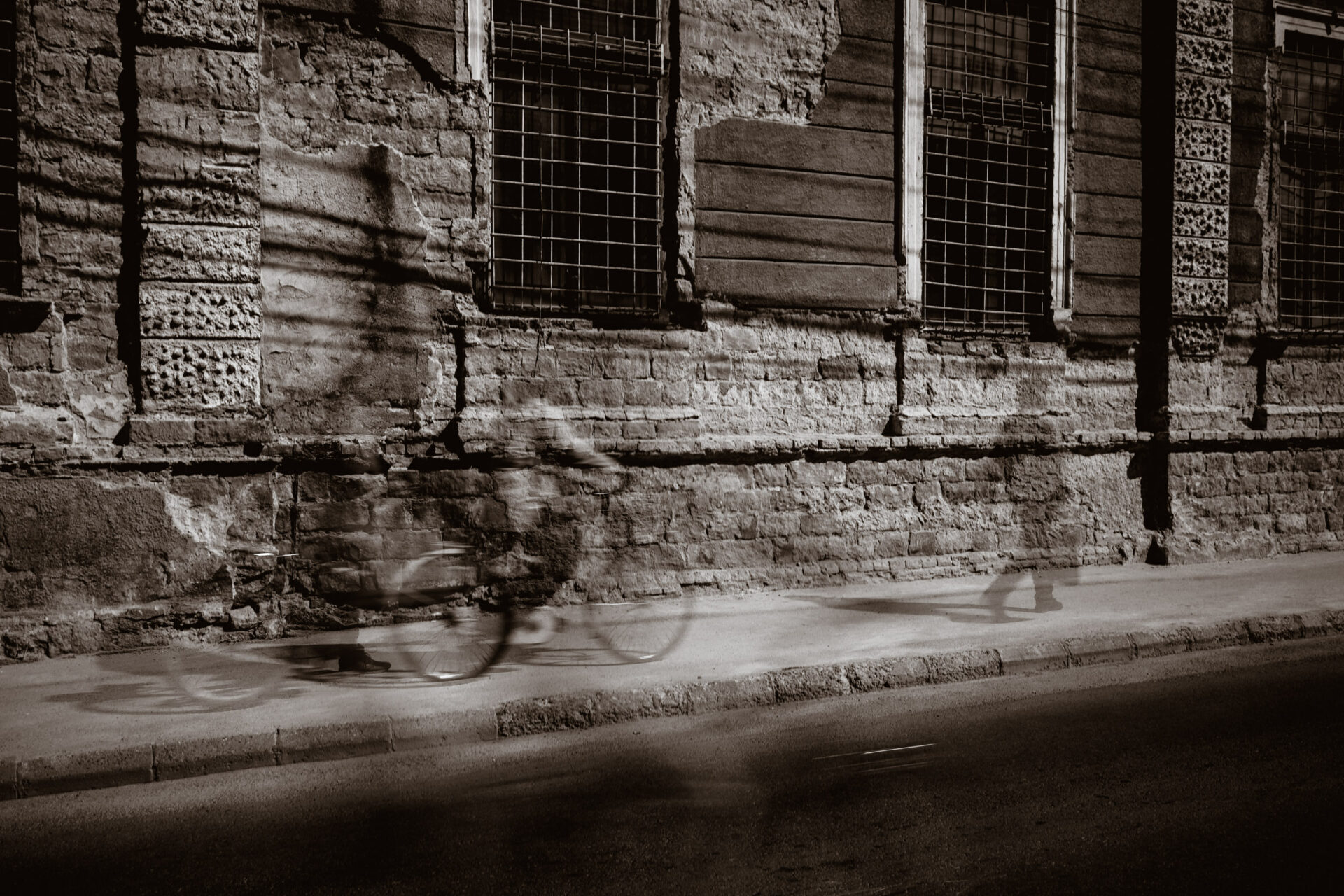
This particular abandoned house has been catching my attention ever since I first saw it six weeks ago. Perhaps it is something to do with the textures of the walls. Perhaps it is something about the size of the windows and various anachronistic details in its structure: in one of the walls around the corner for example, remnants of an arch that was later bricked up are still visible.
This house, in the middle of what was once a rich Jewish neighbourhood in the centre of Sighet, stands with all those houses across Transylvania that people refer to as a “Jewish House”. I asked several passers-by if they knew what used to be here, and the answer was, if they knew, mostly this: casă evreiască (a Jewish house).
This concept has intrigued me ever since I first heard it. There is nothing Jewish about the house itself, you see. The Jewish House is a story.
A house becomes a Jewish House only if the Jews who once dwelt in it were expelled and then killed. The Jewish house is not a Jewish House because of some particular style of architecture. The Jewish house is not a Jewish house because Jews live in it now. It is a house that was once inhabited by Jews, who were then expelled, gathered in the ghetto, transported to death camps and never returned.
The house remained abandoned for a while and was then nationalised by the communists in 1948. Given to a trust to be managed and maintained, if it did not fall into ruins, it was rented out to be used as storage space, apartments, or social housing.
Only thus a house becomes a Jewish house.
The Jewish house is a house in the landscape of narrative and social memory. Although there are variations of this story, the narrative pattern remains the same. In recent years, the residents were allowed to purchase the properties from the Romanian state. Some are trying to sell their houses and the term “Jewish House” now appears in the sale ads on the internet.
Image 6 (no.3282): Akos’s Orchard
9 images of 1 second exposure over a 90 minute period
Location: 47°55’04.8″N 23°52’23.7″E
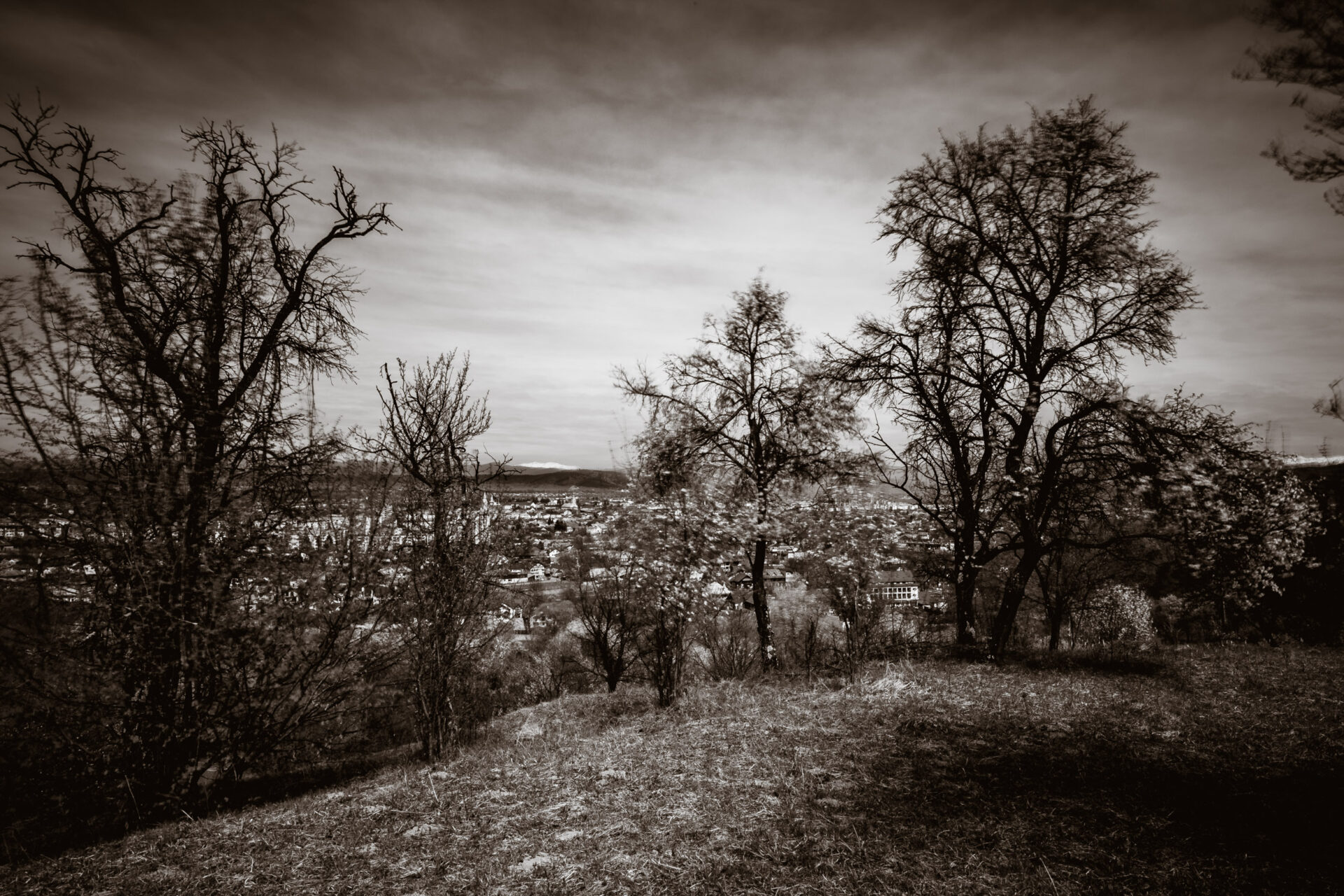
Crossing the river Iza, I climbed up the hills overlooking the city. I wanted to return to the little apple orchard I discovered upon my arrival here to take this last image of Sighet.
I found myself a good spot among the twenty or so old twisted and wildly branching apple trees. You can see only two of them in the picture. The other ones surround me. Some of them, like the one to the right of the frame, were beginning to blossom with little white flowers, while others who might have already reached the end of their life cycle, remained barren. I liked the contrast between the rough dark tree skin and the delicate whites of the flowers. I liked that some of the broken branches that were only partially connected to the tree were blossoming. I liked the silence and the view across the city onto the surrounding peaks of snowy mountains.
Many of the Jews of Sighet had their gardens in these hills. Judging by the age of some of these trees I assumed they must have been planted about one hundred years ago. Later on, a chance encounter with a local topographer confirmed that these lands indeed belonged to a Jew by the name of Sekely Akos.
I sat in Akos’s orchard, which I would urge you to visit, for over ninety minutes taking a one second exposure every ten minutes. In a sort of a meditation I watched the branches move in recurring gusts of wind, shifting between agitation and silence. I watched the clouds slowly spreading across the horizon. I observed the shadows moving eastwards ever so slowly.
I thought of all that I have learned about the Jews of Sighet. I thought of how foreign they seemed to me upon my arrival, and how close I felt to them now; these sisters and brothers of my forefathers. I thought about the other images I took and the story I was trying to tell about them. My thoughts kept coming back to this single line that Elie Wiesel once wrote: “how was one to speak of them without trembling and a heart broken for all eternity?” (5)
Refrences
(1) INGOLD, Tim. 2000. The Perception of the Environment: Essays in Livelihood, Dwelling and Skill, London: Routledge.
(2) WIESEL, Elie. 1995. All Rivers Run to the Sea: Memoirs. New York: Schocken Books.
(3) WIESEL, Elie. 2006 (1958). Night. New York: Hill and Wang.
(4) WIESEL, Elie. 2003. In: Alfassi, Netzer & Szalai (Eds.). The Heart Remembers: Jewish Sziget. Tel Aviv: Serfari.
(5) WIESEL, Elie. 2006 (1958). Night. New York: Hill and Wang.
